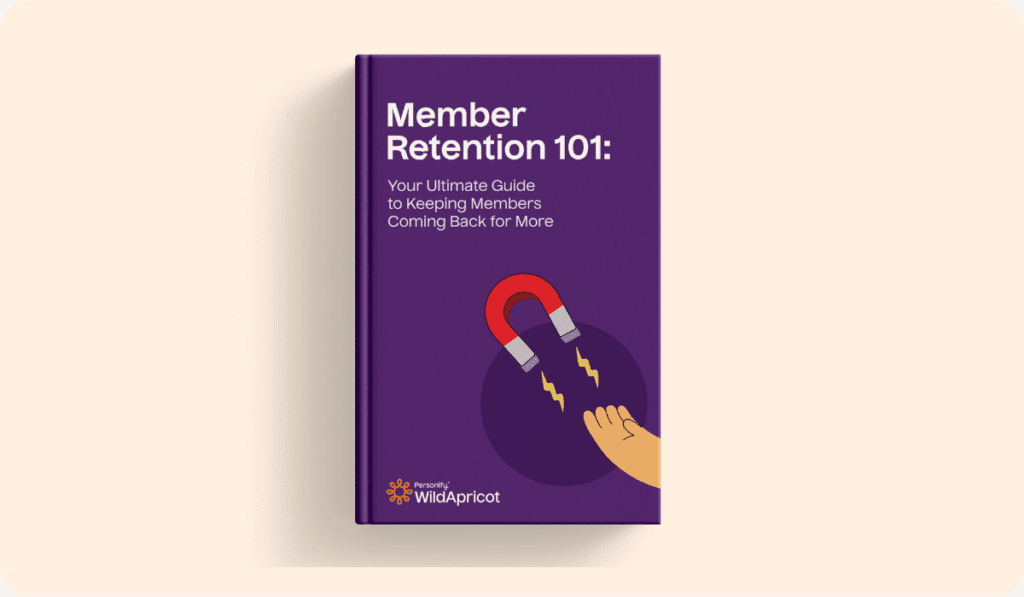Picture this: you’ve just recruited an incredible new board member.
They have great skills and connections, they’re passionate about your cause and they’re eager to help advance the success of your nonprofit.
But you don’t have time to share much information with them about their board duties or the different ways they could contribute.
You invite them to their first board meeting and just hope your existing board members will be able to show them the ropes.
Over time, they slowly learn about their role and your organization. They occasionally speak up at meetings as their knowledge grows.
But they don’t seem as engaged as they did when they were first recruited, and soon they’re just going through the motions: attending board meetings, commenting on strategies, participating in votes and going home.
Sound familiar? You’re not alone.
Lack of board engagement is a major issue plaguing the nonprofit sector.
A 2015 survey by Stanford University found that just half of nonprofit board members understand their obligations or feel engaged in their role.
And a 2018 report by Green, Hasson & Janks revealed that only 20 per cent of boards consider board engagement a top priority.
But we also know that a strong, engaged board is critical to a nonprofit’s success.
So, how can you start your new board members off on the right foot – and help your existing board members feel more engaged with your mission?
Here, we offer eight steps for developing an effective board orientation program and a few ideas for keeping that spark alive over the long term.
1. Get Clear on the Importance of a Thoughtful Board Training Program
Before you get started, it’s important to understand why an effective orientation experience is so important for your board members.
Janet Farrell, Director of the Office of the CEO and Board of Directors at Kids Help Phone, says that properly orienting new board members empowers them to create impact.
“Our board members are our greatest advocates,” she says. “They want to help and they want to bring their skills, expertise and experience to do good. Providing them with more exposure and information through an orientation program helps them feel more confident, deepens their passion and brings them closer to our mission.”
Knowledge is power. When your board members feel comfortable and familiar with the requirements, expectations and possibilities of their role, they’ll be far more likely to actively contribute and make a meaningful difference.
2. Ask Current Board Members About Their Experiences
What worked for your current board members – and what didn’t?
Before going any further, make sure to ask your existing directors what they would have found useful during their orientation (or lack thereof).
Questions to ask might include:
- What information do you wish you’d had?
- How could we have better supported you as a new board member?
- Did you feel welcome and valued as a new recruit?
- What can current board members do to support the orientation process?
- How much time should new board members dedicate to the orientation process?
3. Think About What Your Board Members Need to Know, and What You Want Them to Know
Board members wear many hats: they have legal duties to fulfill, they ensure the legal and ethical integrity of the organization, they provide strategic guidance and, in many cases, they actively fundraise on behalf of the organization.
Needless to say, there’s a lot they need to know.
Start by making a list. What do they need to know – and what do you want them to know?
Examples of “need to know” information may include:
- The organization’s mission and vision
- The role of a nonprofit board of directors
- The duties and responsibilities required of each board member
- The guiding values and principles of the board
- Which board committees exist
- Frequency of board meetings and how they’re run
- Which resources are available for support, guidance and information
- How decisions are made
Farrell says each new board member at Kids Help Phone is provided with a comprehensive overview of the legal side of their role.
“We offer information about the regulatory and governance requirements of board members, a listing of the organization’s bylaws, and all the legal bits and pieces they need to know about,” she says.
“Nice to know” information may include:
- An organizational chart showing the staff structure (note: if your nonprofit has many staff members, it’s fine to include only the executive team)
- A board contact list
- Current financial statements
- An overview of the different programs and services offered by the organization
- A brief history of the organization
Remember: if you’re not sure what information would be most useful for new board members, ask your current board members for advice.
And for a comprehensive list of resources to share with board members, check out this post on board orientation from the National Council of Nonprofits.
4. Create an Orientation Package
Once you’ve figured out what to include in your nonprofit’s board training program, compile the information within an orientation package.
The package could come in any number of formats, from a binder of printed material to a PDF to a series of folders saved within a shared network drive.
Try to keep the information simple, accessible and easy to navigate.
It may take a bit of elbow grease on your part, but a comprehensive orientation package will serve as an important ongoing reference resource for new board members.
As Farrell says, “It allows them to have everything right there. It’s a big, long document, but it’s a starting point!”
5. Establish a Plan for Hosting Orientation Sessions
Putting together a solid orientation package is a great start.
But offering live orientation sessions – whether in person or online – is a great way to walk your new board members through the material, cover other topics related to your organization and give them a chance to ask questions.
Orientation sessions don’t have to be time-consuming. In fact, it’s better if they’re not.
“Kids Help Phone used to offer half-day or even full-day orientation sessions, but board members found the time commitment too challenging,” says Farrell. “They wanted a bit more flexibility and they wanted the information spread out over multiple sessions.”
Farrell found hosting a series of virtual orientation sessions over a period of several months to be the perfect solution for busy board members. Each session is 90 minutes long and covers a different topic, such as governance, finance and operations, fundraising or brand and marketing.
All sessions are optional and are open to any board member – whether new or existing – interested in learning about specific topics.
“We found that catering more to board members’ needs and preferences in terms of time commitment and how they like to receive information has been much more effective for long-term engagement,” says Farrell.
When thinking about how to structure your orientation sessions, consider whether virtual or in-person sessions (post-pandemic, that is!) may be best for your board, which topics or themes you may want to cover and how many sessions – and over what period – may be required.
6. Create a Board Member “Contract”
A non-legally binding “contract” for board members can be an effective way to establish clear expectations for individual board members and the organization’s obligations to them.
A contract lays out the agreed-upon “terms” of a board member’s roles and responsibilities and can be shared as part of the orientation process.
Take a look at this sample board member contract from Blue Avocado for a template you can customize for your own needs.
7. Make Sure They Know Who to Contact
Offering a primary point of contact is a simple but often overlooked step in orienting new board members.
Your new recruits will probably have a lot of questions as they’re getting familiar with your organization and your processes. Make sure they have contact details on hand for at least one key staff person who could be their main point person.
Depending on the size of your organization, this could be your executive director, an individual responsible for board management, an executive assistant or even a set of different staff members assigned to various board members.
Farrell suggests having one main administrative point person for all board members – someone who can answer questions about scheduling, provide documents and offer a range of ongoing supports.
“It’s important for board members to feel there’s a trusted person on the other end, someone they can come to for general information,” she says. “Even if you’re a large organization, it can be easiest to have one individual whose name is well known among your board for questions and inquiries. It also gives you a full view of the well-being of the board and what their concerns may be.”
8. Offer Formal and Informal Check-Ins
So, you’ve designed a great orientation plan and feedback has been excellent so far. Congratulations!
But how can you make sure your new board members continue to feel confident in their role?
Offering regular check-ins – both formal and informal – is an important way to keep your new board members engaged as they settle in.
Farrell suggests asking for feedback after each orientation session or board meeting as a quick and easy way to open up opportunities for dialogue.
“It doesn’t need to be cumbersome,” she says. “It could just be a simple touchpoint or a quick survey that allows them to share something that’s top of mind in that moment.”
Don’t Stop There! Keep Your Board Members Engaged for the Long-Term
All board members – whether they’ve just started or they’ve been with your organization for years – deserve to feel excited about the important role they play in advancing your organization’s mission.
An effective orientation program is critical for helping new board members start strong. But you can also support the success of your entire board through ongoing efforts to deepen their engagement and contributions.
This article from Firespring provides excellent ideas for motivating and engaging your board, including:
- Set goals for each board member. These could be related to a specific project, a fundraising goal or their participation in a new strategy. Make sure each board member’s goals align with their strengths and skillset.
- Make sure board meetings are meaningful and strategic. Plan each meeting well in advance to keep them focused, on time and valuable. Always create time for open dialogue and discussion so that board members feel their voices are heard.
- Share mission moments. As often as possible, help your board members feel connected to your cause by sharing stories of the impact they’re helping to create. You could share a verbal or written story of someone whose life was changed because of your organization, or you could even invite a special guest to each board meeting to share their story directly.
For more great board engagement ideas, check out this post from fundraising consultant Amy Eisenstein and this one from the National Council of Nonprofits.
Start Simple
If this sounds like a lot of work, just remember: you don’t need to do it all at once.
Building a strong board orientation program takes time, energy and resources, but the result – happier, more engaged and more effective board members – is worth it.
If you’re starting from scratch, Farrell suggests starting simple.
“I would just start by designating someone to be the point person for each new board member,” she says. “Ultimately, board orientation is about deepening the relationship between board members and the organization, and the best way to do that is to make sure they have someone available to help guide them and answer their questions.”
Did you find these tips helpful? Let us know in the comments!
Looking for more in-depth insights on building an effective board? Check out “How to Build an Effective Nonprofit Board: The Complete Guide” for everything you need to know!









